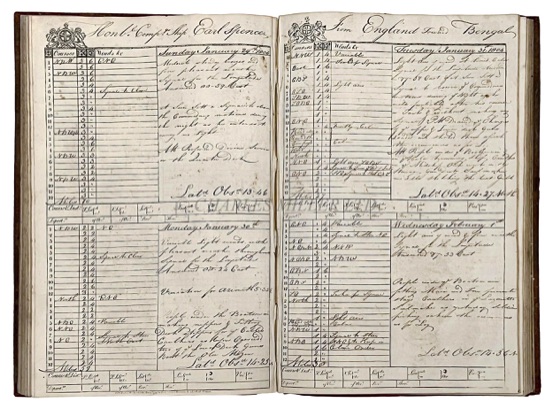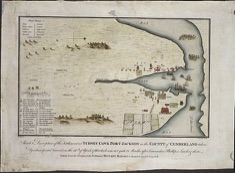Captain Charles Raitt
Charles Raitt (Dundee)
On 8 February 1797, Charles Raitt was appointed commander of the East India Company ship Earl Spencer. The East Indiaman, as she was known as, was built in 1795 and had the following measurements: 3 decks, 4in bottom, length 135ft 7in, keel 110ft 1½in, breadth 33ft 2in, hold 13ft 8in, wing transom 23ft 2in, port cell 25ft 1in, between decks 5ft 9in & 6ft 1in, roundhouse 6ft 2in, ports 12 middle and upper, deck range 80ft, 644 tons. She was engaged by the East India Company for three voyages under Captain Charles Raitt. It is interesting to observe that he was sailing to Bengal and China at a time when Captain James Cook and others were exploring the South Pacific islands.
The Biographical Index of East India Company Maritime Service Officers 1600-1834 by Anthony Farrington provides us with a potted biography of Charles Raitt and his career.
Raitt, Charles (1756-1836) born 20 Aug 1756 Dundee, son of James Raitt, merchant, & Isabel Ramsay; apprentice Swallow sloop in coasting trade 3y; seaman in Portugal trade 1y; seaman Elizabeth to St Petersburg 8m; 2d mate Elizabeth Snow to West Indies 1y 3m; 1st mate (chief mate) Providence from New York to West Indies and the Mississippi 2y; 1st mate (chief mate) Friendship to West Indies 6m; 1st mate (chief mate) Florida to West Indies 1y 6m; 2nd mate Florida on cruise 10m; 4th mate in the Stormont on 1st voyage to China in 1779 (acted as 3rd mate from Portsmouth outwardbound) 1yr 11m - aged 24; 2nd mate Stormont to India 1782/3; 2nd mate Bellmont to India 1784/5 - aged 30; 1st mate (chief mate) Earl Fitzwilliam 1786/7 & 1789/90 3 voyages to India, then 4 - aged 32, then 35; 1st mate (chief mate) Alfred 5 voyages to India 1793/4; Captain (Commander) - aged 40, Earl Spencer 1796/7, 1799/1800 & 1802/3; d 30 Mar 1836 Dundee; m 4 Mar 1799 St George’s Bloomsbury, London, Jessy Campbell
The register of ships for the East India Company 1760-1810 and the Catalogue of East India Company Ships’ Journals and Logs 1600-1834 by Anthony Farrington permit us to chart the career of Charles Raitt with the EIC. He served as 3rd mate on the Stormont (723 tons) making a trip to China – leaving Portsmouth on 12 February 1780 and arriving back at the Downs on 20 October 1781. Promoted to 2nd mate on the Stormont, he sailed from Portsmouth to China on 11 March 1783, returning to the Downs on 15 July 1784. As 2nd mate on the Bellmont (758 tons) he sailed from the Downs to China on 14 April 1785, arriving back there on 17 August 1786. He was 1st mate on the Earl Fitzwilliam (803 tons) and sailed from the Downs on 18 February 1877 in Coast and China trade, arriving back on 13 July 1788. He sailed on the same ship again as 1st mate, leaving Portsmouth for Bengal on 14 March 1790 and arriving back at moorings on 9 October 1791. He was also 1st mate on the Alfred in 1794/5, leaving Portsmouth for China on 2 May 1794 and reaching Whampoa on 6 October. The vessel returned via St Helena (13 April 1795) arriving at Long reach on 25 July.
For principal managing owner James Duncan, as Captain of the Earl Spencer (645 tons), Charles sailed in Coast and Bay trade from Portsmouth on 5 June 1797, returning to moorings on 9 February 1799. His voyage encompassed stops on 4 September at Simons Bay, 2 Dec at Madras, 26 January 1798 at Kedgeree, 20 April at Saugor, 22 August at Simons Bay, 30 September at the Cape, 17 November at St Helena, and 3 February 1799 at Downs. (The Lloyd's Register (Green Book), Underwriters for 1800 reveals that on 1 February 1798, owner J. Duncan sent the 645 tons ship Earl Spencer under the command of Capt. C. Raitt, but the order was not taken up – presumably this means that the ship was meant to call somewhere else en route.)
Just a month after he returned from his voyage, on 4 March 1799, whilst commander of the Earl Spencer, Charles Raitt, esq. married Miss Jessey Campbell, of Great Russell Street, youngest daughter of the late Archibald Campbell, esq., collector of the customs at Preston Pans. He made a further voyage on the Earl Spencer as Commander sailing to Bengal from Portsmouth on 28 June 1800 (with 80 men and 20 guns) and returning to moorings on 7 November 1801. The ship called at Kedgeree on 8 Jan 1801, Saugor on 7 April, St Helena on 4 August and was back at the Downs on 12 November. The ship had been expected to sail from St Helena “very soon”, but did not leave until 3 September 1801, arriving back in English waters on 27 October.
The Earl Spencer appears to have then changed owners, because under the principal managing owner, Moses Agar, the Earl Spencer under Captain Raitt sailed again from Portsmouth to Bengal on 30 June 1803. In fact, the Earl Spencer was to be the last of the company’s ships dispatched to Bengal – her time being altered for being in the Downs from 12 April to 17 May 1803. She returning to moorings on 22 March 1805. In between these dates, the vessel was in Rio de Janeiro on 16 Sept, Diamond Harbour (West Bengal) on 11 Feb 1804, Saugar on 26 April, Madras on 16 August, St Helena on 31 December, Plymouth on 11 March 1805, and finally arriving at the Downs on 19 March. The Earl Spencer actually arrived in Plymouth with four other East Indiamen under convoy of the Centurion of 50 guns, having been forced into the port by contrary winds, but was expected to sail again the moment it proved fair.
The East India Report in the Naval Chronicle for 1799 provides some insight into the voyages. For instance, we see that Charles left on his trip to India on 28 June 1800, and we learn that “The last fleet of ships proceeding to India, will not be dispatched before the middle of May [1800]; they are severally ordered to be in the Downs on the 30th of April, and consigned to China direct. The Lord Walsingham and Earl Spencer, Captains Thomas Smales and Charles Raitt, will be the last ships of this season to be dispatched to Bengal direct. None of the East India Company's ships, now under dispatch for the several Presidencies in India, will touch at the Cape of Good Hope, outward bound.”
In a list of pensions granted by the East India Company to Commanders since the year 1793, we can see that on 9 April 1817, Charles Raitt, Commander was granted an annual pension of £100 for life from the Poplar Fund on the grounds of infirmity. On 30 April he was granted for himself and his wife an annual pension for life of £180 from the Contingent Fund plus an annual pension for life of £120 from the Company’s Cash – these sums to replace the gratuity and pension previously awarded on 9 April. The grounds on which it was granted were age and distress.
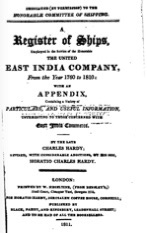

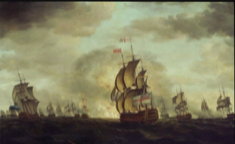
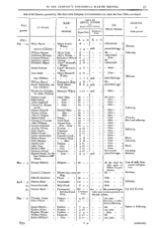
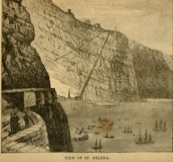
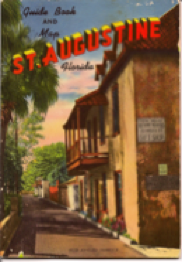
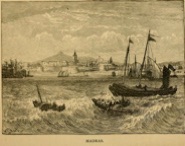

A column in the London Standard for Wednesday 13 April 1836, taken from the Dundee Courier, gives a lengthy eulogy of Charles Raitt and provides some further interesting insights into his character and life. Under the heading Death of Charles Raitt, Esq, the paper reports:
“Died, on Wednesday, the 30th ultimo, at his house in Bell’s-buildings on the Shore, Charles Raitt, Esq., late Captain in the Marine of the Hon. The East India Company. Capt R. was a native of Dundee, and an honour to the place of his birth; for a man of stricter integrity, of a more truly honourable and independent, at the same time kinder and benevolent, spirit never breathed. He began his career at the early age of ten years in the merchant service of his native port, and from that hour, as we have heard, never cost his parents or connections a single shilling. During the American war the vessel which he commanded was captured by the Americans, and he and his crew being first-rate seamen, were offered very considerable bribes to enter into the enemy’s navy. These being contemptuously rejected, they were thrown into prison, where they suffered great privations, and were rigorously treated. At length, however, after several ineffectual attempts, they eluded the vigilance of the sentinels, effected their escape, and got under cover of night to the sea side, where they possessed themselves of a boat, and with no other provisions than a stale loaf which they brought away with them from the prison put to sea. For three nights and two days they were tossed about upon the ocean, and not a single sail hove into sight. On the third morning a vessel appeared, which, upon coming up to her, they found to be an American. Notwithstanding their weak and exhausted condition, they gallantly boarded her, mastered her crew, whom they put under hatches, and steered away for the nearest friendly port. This happened to be St. Augustine, belonging to East Florida, which was then in possession of the English. On their safe arrival on shore, Captain Raitt urged very strongly that the vessel should be given back to her original crew. But this was objected to by his comrades and the authorities, on the ground that she was a lawful capture. Shortly after this adventure Captain Raitt left the merchant for the East India service, which he entered as second mate. He was made captain in 1797, and appointed to the command of the Earl Spencer. This being one of the ships that had been engaged by the Company for a limited period, he made as commander only three voyages in her; and when she was given up by her owners, he retired from the service.
Perhaps no man without the advantages of high station and opulence ever possessed more – and few so much – influence with the principal men of his profession, and with the directors of the East India Company, than the late Captain Raitt. This influence was obtained solely by openness, the generosity, and integrity of his character. Many a time has been the lot of the writer of this feeble tribute to the memory of his friend, to witness the reception of Captain Raitt in the Jerusalem Coffee-house, where those who have most to do with the disposal of East India patronage are generally to be found every day. On his entrance he was instantly surrounded by captains and directors, by whom he was welcomed in the most cordial and friendly manner. To these he had always a tale to tell of some promising youth of Dundee, who was just fitted for such a birth, or who would admirably fill such a situation; or of some poor widow husband had died in the service, and on whom the Company ought o bestow a pension; and he seldom gave over his importunities till he obtained the boon he sought. Many are the friendless youths of his native town that he hath put forward in the world, and many are the widows that whom he has rescued from the gripe of poverty. The more humble the object, and the more distressing the case, the more did he exert himself for the promotion of one and for the relief of the other; so faithfully and truly did he discharge the Christian precept, “to do good and hope for nothing again.”
By his intimate acquaintance the death of Captain Raitt will be deeply felt and sincerely mourned, for a more attached and truer friend there could not be. In general society the deceased was a thorough gentleman, although in the heat of argument, and particularly upon politics, on which he was a sound Conservative and strictly loyal subject – (only two days before his death, among other things in reference to the change about to take place, he said, “I die a loyal subject, may God bless the King.”) – he would sometimes drop a hastier expression, or utter a more angry word than might be strictly consistent with the rules of courtesy, yet this intemperance was but for an instant –
“Momentary as a sound, -
Brief as the lightning in the collied night
That, in a spleen, unfolds both heaven and earth,
And ‘ere a man hath time to say, - behold!
‘This gone!”
Although the jewel of the mind might occasionally be exhibited in a rough casket,
yet it was a jewel, and one too of inestimable price. Resquiescat in pace.”
-----
In the church yard of the Howff, Dundee gravestone 335/2 has written upon it:
1837. Margt Raitt 31.5.1824, 67; husband late mr Thos Beveridge mart in Perth. Chas Raitt esq late commander in the HEIC’s Naval Service d 30.3.1836, 79. (Capt. Chas Raitt – Shore)
The Margaret Raitt mentioned above is the sister of Charles. Their parents, James Rait and Isobel Ramsey, had four children: Hellen baptised 28 December 1752 in Dundee; William born and baptized on 2 April 1755 in Dundee; Charles born 20 August 1756 and baptised 26 August in Dundee; and Margaret baptized 1 September 1757. Charles's wife, Jessy, died on 26 May 1850. A note in the Dundee Courier for Wednesday 5 June 1850 announces that Mrs Janet Campbell, relict of the late Capt, Charles Raitt of the Hon. East India Co.’s Services, died at her house in Dundee on 1 June. She was 86, having been born in 1764 and was also buried in the Howff, Dundee. The couple had married on 4 March 1797 in St George, Bloomsbury, Camden, London.
-----
Despite this glowing above obituary, it seems that Captain Charles Raitt’s career may have come to a less than glorious end following a Court of Enquiry held in Calcutta in March 1804 into his behaviour onboard the Earl Spencer.
It is interesting to note that the obituary above states that Charles was captain of the vessel captured by the Americans. From his maritime record above it would appear that in his earlier voyages around this time, he was at best a mate and did not attain his captaincy until some years later. Furthermore, the American War referred to was almost certainly not the one fought between the United States and Great Britain from 1812-1815, but more likely the American Revolutionary War (1775–1783) or War of Independence, as it was also known, since the action in which Charles was involved occurred before he joined the HEIC around 1780. It is not known which ship he was master of at this time.
-----
The Earl Spencer had an interesting life following its voyages to Bengal and elsewhere. It seems that the vessel was later caught up in the Napoleonic Wars – though not when Charles was its master. A French frigate, Caroline, in the Bay of Bengal spotted three sails on the horizon on 31 May 1809 belonging to a Britain-bound convoy of East Indiamen, which had departed the Hooghly River almost a month earlier. Laden with over £500,000 worth of silk and other trade goods, these ships had originally been part of a larger convoy, guarded by the sloop HMS Victor and consisting of five Indiamen and several smaller vessels. On 24 May a storm divided the convoy, with HMS Victor, the small ships and two of the East Indiamen, the Monarch and the Earl Spencer, being separated from the remainder. Although the other three East Indiamen carried cannon and guns, their crews (comprising large numbers of Chinese and lascar seamen) were not of Royal Navy standard, and they were gradually picked off one by one by the Caroline.
Some ten or so years later, the Earl Spencer appears to have been used to transport convicts to Australia. As described on the Free Settler or Felon Convict and Colonial History website, the Convict Ship Earl Spencer departed Portsmouth with 200 men on board on 2 June 1813 and sailed via Madeira to Port Jackson (Sydney, New South Wales), arriving there on 9 October 1813. Governor Lachlan Macquarie recorded the arrival in his journal....... On Saturday 9th October - This forenoon The Earl Spencer Convict Transport Ship commanded by Capt. Wm. Mitchell anchored in the Harbour from England, from whence she sailed on the 2d. of June last, touching only at Madeira which she left 2d. of July. - She brings 196 male Convicts - wt. a Guard of one Subn. (Ensign Bicknell)and 38 men of the 73d., together wt. several Free Settlers, and one asst. Surgeon (Mr. Young) for the Colony. I have received Public Dispatches by the Earl Spencer, and also a great many Private Letters from my Friends at home, all of which contain good news. By this conveyance I am informed, tho' not officially, of the certainty of my being appointed a Major General in a large Brevet made by the Prince Regent on the 4th. of June last.
The voyage took 129 days and there were two deaths en route. When the Earl Spencer arrived in Sydney the colony was in the grip of a devastating drought. Crops had failed and livestock was depleted. It had been intended that the Earl Spencer would convey troops to Ceylon and Governor Macquarie was informed that ships had been chartered at a great expense and they were to be detained at Port Jackson as short a time as possible. It was expected that the 73rd regiment would be ready to embark on the arrival of the Earl Spencer. By early November Government carpenters were employed in constructing the necessary berths, partitions and hammocks, and the decks intended for the troops were properly cleared and cleaned before the Government white washers proceeded on board to white wash the decks. Separate accommodation was provided for married couples and single men slept in hammocks.Three hundred and thirty-four soldiers as well as seven Officers of the 73rd regiment were supposed to depart on her accompanied by 36 women and 70 children.however the Earl Spencer was found inadequate for taking the troops to Ceylon, being too crowded, and a number of people were removed including 152 men, thirty women, sixty three children and six officers who were all to remain in Sydney until more suitable vessels could be procured. The Earl Spencer departed the colony on 25th January 1814.
-----
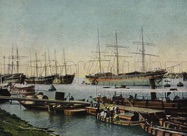
In a fascinating codicil, I found that a log book for the Honourable East India Company ship Earl Spencer, circa 1803-1804 was sold for a hammer price of £800 (estimate was £200-300, final cost was £992) at the auction house of Charles Miller Ltd on 14 November 2023 as Lot 32. The logbook reveals that the ship was moored at Blackwall, then Gravesend, Portsmouth and sailed thence to Bengal, 25 April 1803-7 February 1804 with a month stop at Rio de Janeiro (18 September-16 October) for repairs and supplies. This is the clearly the voyage of Captain Charles Raitt as mentioned above! According to the auction house, the log book contained 110 pages and most of the entries were standard for this type of log: weather, cleaning the ship, washing clothes, making gaskets and sails. The log finishes abruptly on Thursday 7 February 1804 with Earl Spencer still at sea. There were numerous blank pages at the end, and the description notes contemporary reverse calf (slight damage to spine), folio -- 14¾ x 9 in. (37.5 x 23 cm.) The auction house adds that the Earl Spencer was a 644-ton ship built in Perry's Yard, Blackwall for James Duncan, and launched in 1795. Plying a steady trade to the Coromandel Coast and Bengal, in 1811 she was chartered by the British government and used to transport convicts to Botany Bay, her final fate is unrecorded.
